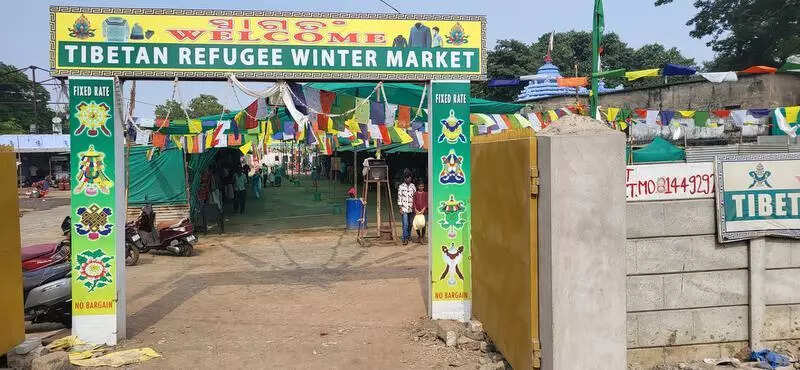Gajapati Tibetan Traders Struggle as Short Winters Challenge Woollen Garment Business | Bhubaneswar News

Berhampur: For over four decades, many Tibetan settlers in Gajapati district have relied on their seasonal trade in woollen garments to sustain their livelihood. However, the effects of climate change, particularly short winters, are posing challenges to their long-standing business model.
“When we started to sell woollen garments in Berhampur, we set up over 70 stalls, and the business ran for four to five months about four decades ago,” said an elderly Tibetan woman.This year, the Tibetans set up 33 stalls with only a few families involved in the business.
Tenzin Soepa, one of the sellers, said, “Last year, the market was set up on Nov 1 and was scheduled to continue until Jan 15. However, we packed up our businesses before the scheduled date because of the onset of early summer.”
This year, however, there is cautious optimism as weather forecasts suggest a colder winter from late Nov. “We hope the business will improve when winter reaches its peak,” said Tsereng Phuntsok, another seller.
With changing times, they sell garments of the latest designs. These include sweaters, jackets, women’s cardigans, shawls, mufflers, caps and baby suits. “Some years ago, women family members were making garments. However, now we procure them from Ludhiana in bulk to sell. This is because hand-made manufacturing costs are high,” said Tsering Dolma, a seller.
Besides Berhampur, several Tibetan traders also go to Cuttack, Bhubaneswar, Puri, Rourkela, Koraput and Keonjhar in Odisha and Visakhapatnam in Andhra Pradesh to conduct their business.
Over 2,500 Tibetans have settled in five camps at Chandragiri, Takallipadara, Labarsingh, Jeranga and Mahendragarh since 1964, when they fled from Tibet, with their spiritual leader, the Dalai Lama.
“When we started to sell woollen garments in Berhampur, we set up over 70 stalls, and the business ran for four to five months about four decades ago,” said an elderly Tibetan woman.This year, the Tibetans set up 33 stalls with only a few families involved in the business.
Tenzin Soepa, one of the sellers, said, “Last year, the market was set up on Nov 1 and was scheduled to continue until Jan 15. However, we packed up our businesses before the scheduled date because of the onset of early summer.”
This year, however, there is cautious optimism as weather forecasts suggest a colder winter from late Nov. “We hope the business will improve when winter reaches its peak,” said Tsereng Phuntsok, another seller.
With changing times, they sell garments of the latest designs. These include sweaters, jackets, women’s cardigans, shawls, mufflers, caps and baby suits. “Some years ago, women family members were making garments. However, now we procure them from Ludhiana in bulk to sell. This is because hand-made manufacturing costs are high,” said Tsering Dolma, a seller.
Besides Berhampur, several Tibetan traders also go to Cuttack, Bhubaneswar, Puri, Rourkela, Koraput and Keonjhar in Odisha and Visakhapatnam in Andhra Pradesh to conduct their business.
Over 2,500 Tibetans have settled in five camps at Chandragiri, Takallipadara, Labarsingh, Jeranga and Mahendragarh since 1964, when they fled from Tibet, with their spiritual leader, the Dalai Lama.
















